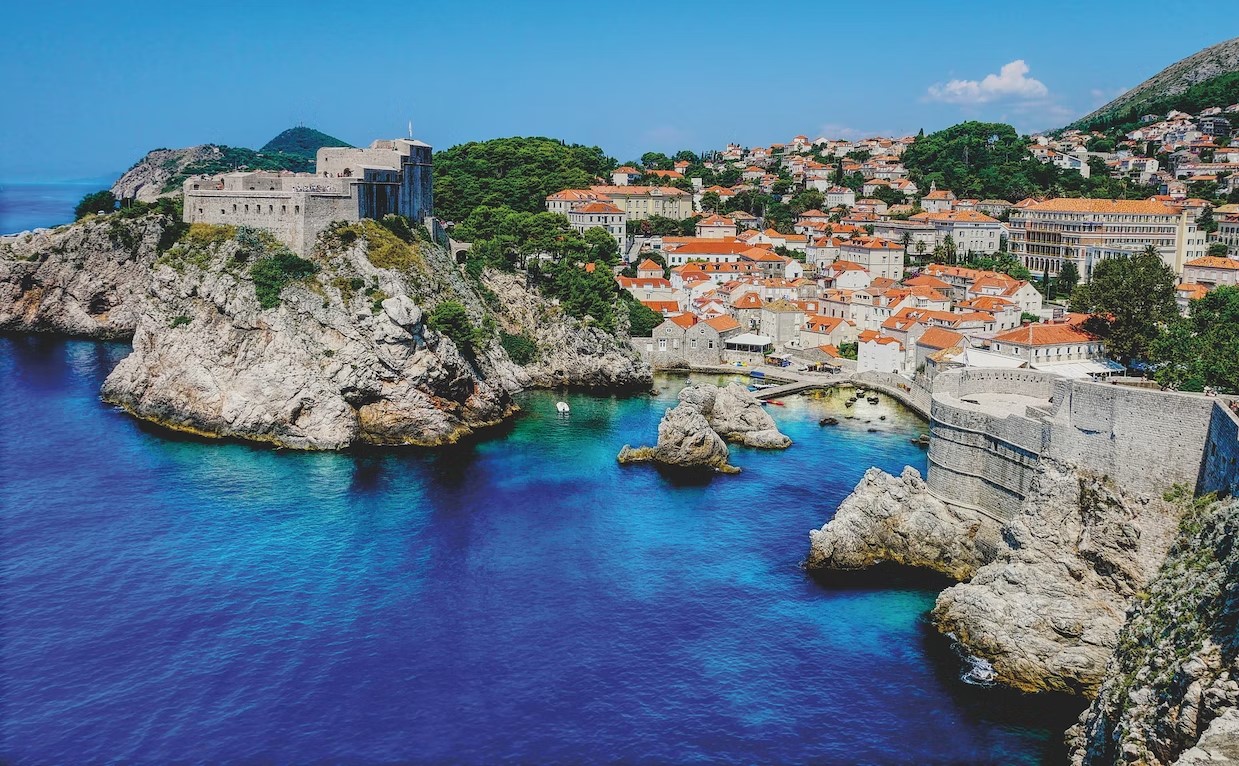Croatia offers stunning natural landscapes, historic cities, and rich culture. To make the most of their trip, travelers need to choose the right transportation method that suits their needs and budget. This article will explore the different ways to travel around Croatia and help tourists make informed decisions.

Public transportation in Croatia:
One of the most affordable ways to get around in Croatia is by public transportation, which includes buses, trains, and ferries.
Traveling by bus in Croatia is a convenient and cost-effective way to explore the country. Buses are the most common form of public transportation, and they offer routes to most major cities and towns in Croatia. Bus fares are relatively inexpensive and offer a comfortable ride with air conditioning, free Wi-Fi, and sometimes even refreshments.
Another option for traveling by public transportation in Croatia is by train. While trains are not as frequent as buses, they offer a scenic and comfortable way to travel between major cities. Train tickets are often more expensive than bus tickets but can be worth the cost for the experience and the views.
Ferries are also a popular mode of public transportation in Croatia, particularly for traveling between the mainland and the islands. Ferries offer a unique way to see the Croatian coast and can be a fun and relaxing way to travel.
Overall, traveling by public transportation in Croatia is worth it for budget-conscious travelers who want to see as much of the country as possible. It may not be as convenient as renting a car or taking a taxi, but it offers a more affordable and eco-friendly way to travel while also allowing travelers to experience the local culture and interact with the locals.
Renting a car in Croatia:
Renting a car in Croatia can be a convenient and flexible way to explore the country, but is it worth the cost? The answer depends on your travel style, itinerary, and budget.
One of the benefits of renting a car in Croatia is the freedom and flexibility it provides. With a car, you can explore remote areas and hidden gems that may not be accessible by public transportation. You can also set your own schedule and travel at your own pace.
Another advantage is the convenience of having a car at your disposal. You don’t have to worry about timetables, schedules, or crowds, and you can stop wherever you want along the way.
However, renting a car in Croatia also comes with some drawbacks. The cost of renting a car can be expensive, especially during peak travel season, and you may also have to pay additional fees for insurance, fuel, and tolls. Driving in Croatia can also be challenging, especially in urban areas, where traffic can be heavy and parking can be limited.
If you’re planning to visit Croatia’s major cities, such as Zagreb, Split, or Dubrovnik, renting a car may not be necessary, as these cities have well-developed public transportation systems, including buses, trams, and trains. Public transportation is also an affordable option for traveling between cities and regions, and it can be a good way to meet locals and experience the culture.
In conclusion, renting a car in Croatia can be a great option if you’re looking for flexibility and convenience and if you’re planning to explore remote areas and smaller towns. However, if you’re traveling on a tight budget or sticking to major cities, public transportation may be a more cost-effective and practical option.

Taxis and ride-sharing services in Croatia:
Taxis and ride-sharing services, such as Uber and Bolt, are becoming increasingly popular options for travelers in Croatia. They offer a convenient and comfortable way to get around, especially in cities where parking can be challenging and public transportation may not be as frequent or reliable.
One of the advantages of using taxis and ride-sharing services is that they can be accessed through a mobile app, making it easy to request a ride and track the driver’s location. Additionally, the fare is often fixed and can be paid through the app, which eliminates the need for cash and potential language barriers with the driver.
However, it’s important to note that using taxis and ride-sharing services can be more expensive than other transportation options, particularly for longer distances or during peak travel times. Additionally, in some smaller towns or rural areas, these services may not be available at all.
Ultimately, the decision to use taxis and ride-sharing services in Croatia will depend on the traveler’s budget and preferences. For those who value convenience and are willing to pay a premium, they can be a good option. However, for those looking to save money, public transportation or renting a car may be a better choice.
Cycling in Croatia:
Cycling in Croatia can be an incredible experience, offering breathtaking views and opportunities to explore the country at a slower pace. However, it may not be suitable for everyone, as it requires a certain level of fitness and endurance.
If you enjoy outdoor activities and want to fully immerse yourself in the beautiful landscapes of Croatia, cycling can be a great way to do so. It allows you to go off the beaten path and discover hidden gems that may be inaccessible by car or public transportation.
Renting a bike in Croatia is relatively affordable, and there are many rental shops available in popular tourist areas. Additionally, there are numerous cycling routes and trails throughout the country, ranging from easy, flat paths to more challenging mountainous routes.
Cycling also offers environmental benefits, as it is a sustainable and eco-friendly way to travel. It can also provide a sense of adventure and freedom, as you can explore at your own pace and take breaks whenever you please.
However, it is important to note that cycling in Croatia may not be suitable for everyone. The terrain can be hilly and challenging, and some roads may not have dedicated cycling lanes. It is also important to take necessary safety precautions, such as wearing a helmet and following traffic rules.
In conclusion, cycling in Croatia can be a rewarding and memorable experience, offering a unique way to explore the country’s natural beauty and culture. However, it is important to assess your own fitness level and take necessary safety precautions before embarking on a cycling adventure.
Travelers to Croatia have several transportation options, each with its advantages and drawbacks. Public transportation is affordable and convenient but may not provide the same level of flexibility as renting a car. Taxis and ride-sharing services offer comfort but can be expensive. Cycling is an excellent way to explore Croatia’s natural beauty and stay active, but it may not be suitable for everyone. We recommend choosing the transportation method that best suits your preferences, budget, and itinerary.

